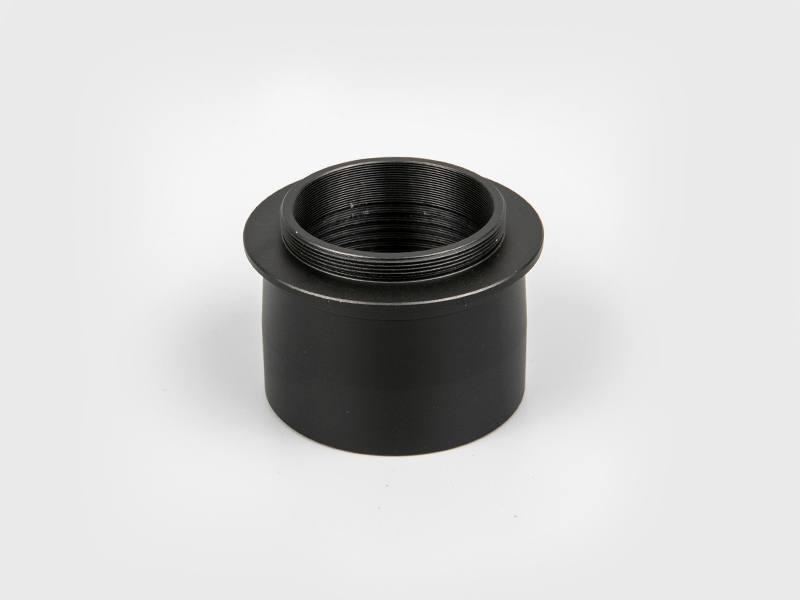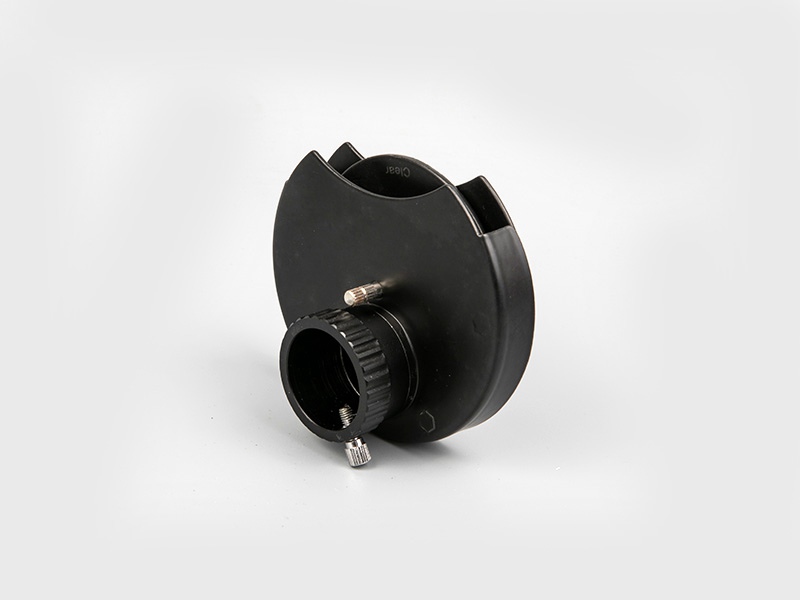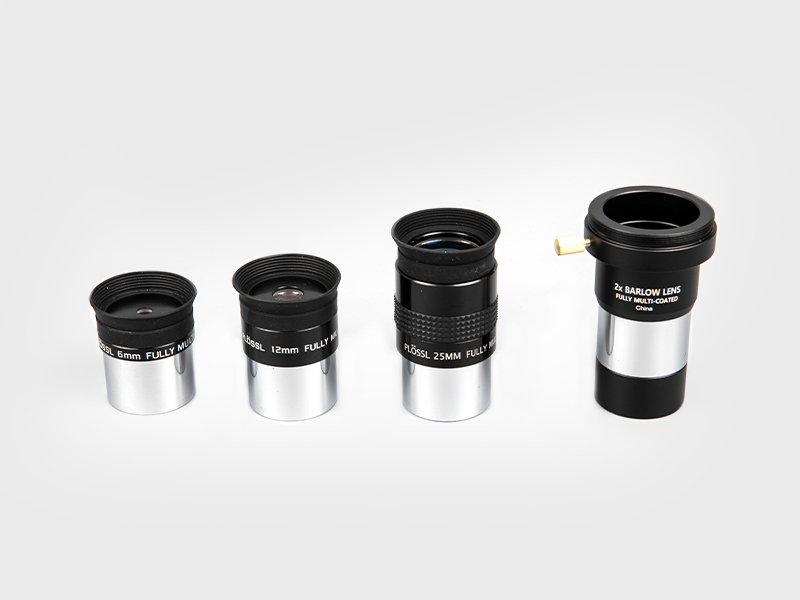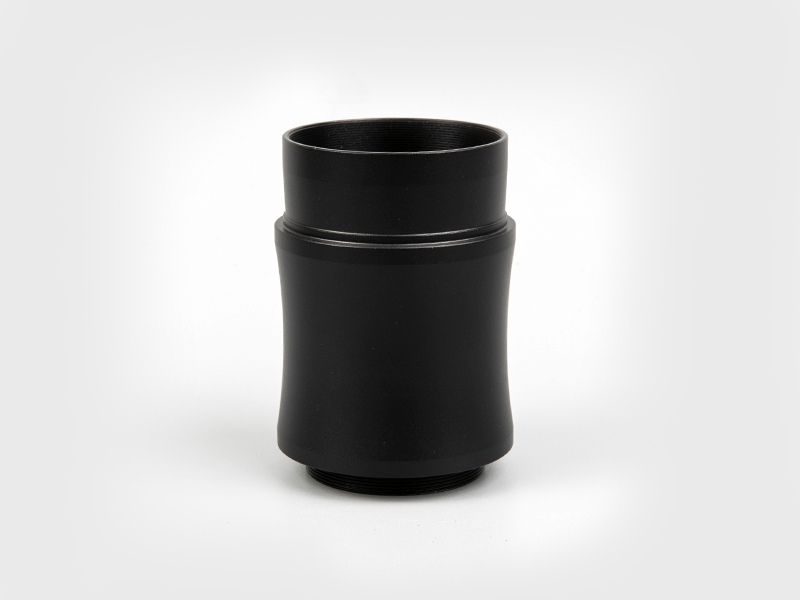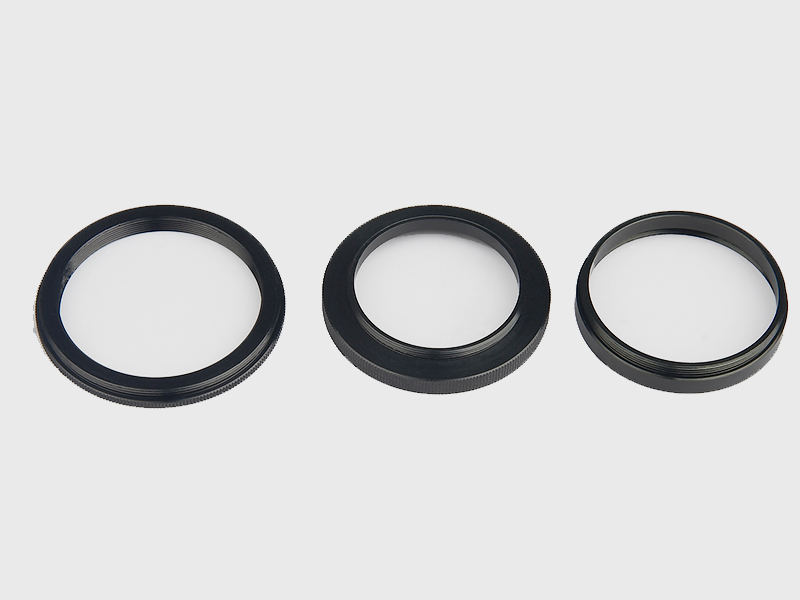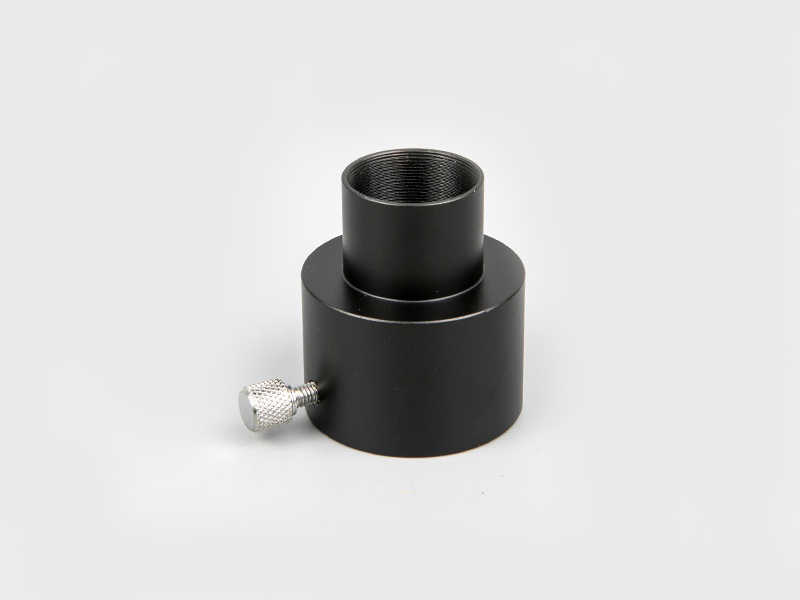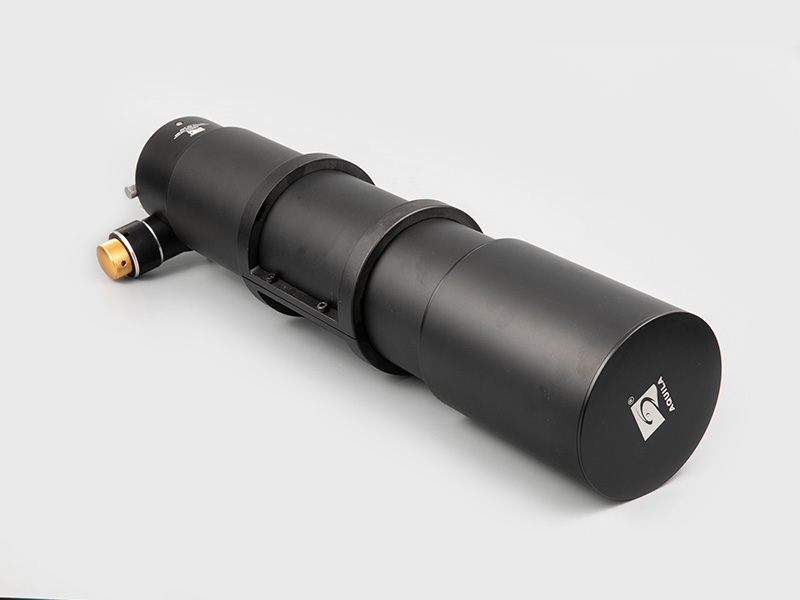The working principle of the astronomical telescope is that the objective lens (convex lens) condenses the light and the image is enlarged by the eyepiece (convex lens). The light is condensed by the objective lens, and then enlarged by the eyepiece. The objective and eyepieces are all double-separated structures, so as to improve the imaging quality. Increase the light intensity per unit area, so that people can find fainter celestial objects and more details. What hits your eye is nearly parallel light, and what you see is a virtual image magnified by the eyepiece. It is to magnify the small opening angle of the distant object by a certain magnification, so that it has a larger opening angle in the image space, so that the objects that cannot be seen or distinguished by the naked eye become clear and discernible. It is an optical system that keeps the incident parallel light beams parallel and exits through the objective lens and eyepiece.
There are generally three types:
1. Refractor telescope: It is a telescope that uses a lens as a mirror. There are two types: Galilean telescopes with concave lenses as eyepieces; Kepler telescopes with convex lenses as eyepieces. Because the chromatic aberration and spherical aberration of the single-lens objective are quite serious, modern refractor telescopes often use two or more lens groups as the crop lens.
2. Reflecting telescope: It is a telescope that uses a concave reflector as a mirror. It can be divided into several types such as Newtonian telescope and Cassegrain telescope. The main advantage of the reflecting telescope is that there is no chromatic aberration, and when the objective lens adopts a paraboloid, spherical aberration can also be eliminated. However, in order to reduce the effects of other aberrations, the usable field of view is smaller. Only a small expansion coefficient, low stress and easy grinding are required for the material of the mirror.
3. Catadioptric telescope: On the basis of spherical mirror, a refraction element for correcting aberration is added, which can avoid difficult large-scale aspheric processing and obtain good image quality. The more famous one is the Schmidt telescope, which places a Schmidt correction plate at the center of the spherical mirror. It is a flat surface on one side and a slightly deformed aspheric surface on the other side, so that the central part of the beam is slightly convergent and the outer part is slightly divergent, just correcting spherical and coma aberrations.

 English
English 日本語
日本語 Deutsche
Deutsche España
España
